Selecting appropriate Software Development Stacks can determine whether you create a resilient, scalable application or encounter persistent challenges in your business journey.
A technology stack comprises the foundational tools and programming languages that drive today’s software applications. It significantly influences the design, functionality, and scalability potential of a mobile or web app. To enhance the likelihood of crafting a software product that resonates with users, here’s a guide on selecting the suitable technology stacks for your startup team.
What are Software Development Stacks?
A technology stack has a collection of tools, coding languages, and technologies synergistically employed to construct digital solutions or products like websites, mobile, and web applications.
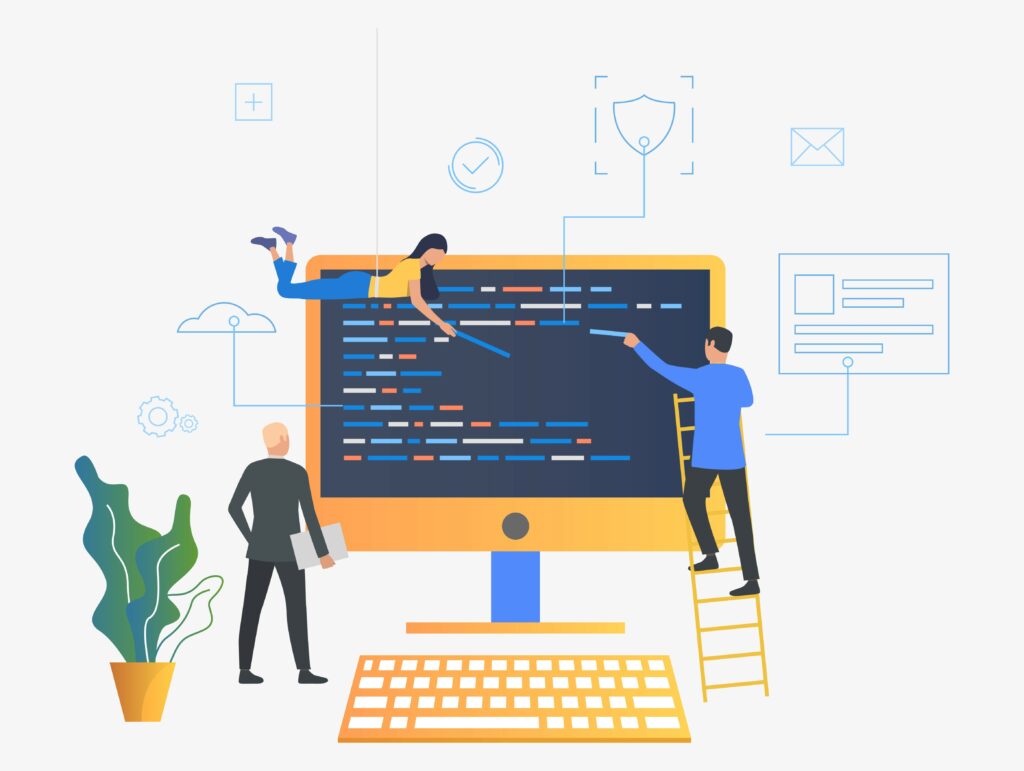
A technology stack is composed of two crucial components: the frontend (client-side) and the backend (server-side), which collaborate to form a cohesive tech stack, also known as an application stack. Although various technology stacks exist for web development, they are not all of equal merit.
Choosing an appropriate technology stack can be daunting, especially for startups and small enterprises with limited financial resources and manpower. Hence, selecting the right technology stack is pivotal for initiating and advancing their software endeavors.
Best software Development stacks
To streamline your development process and budget, leveraging established technology stack models can be advantageous. While their components undergo periodic updates, the foundational principles remain consistent.
A key benefit of opting for these renowned technology stack examples is the wealth of accessible knowledge.
1. LAMP Stack
The LAMP stack stands out as a favored choice in software development. It comprises four primary elements: Linux, Apache, MySQL, and PHP.
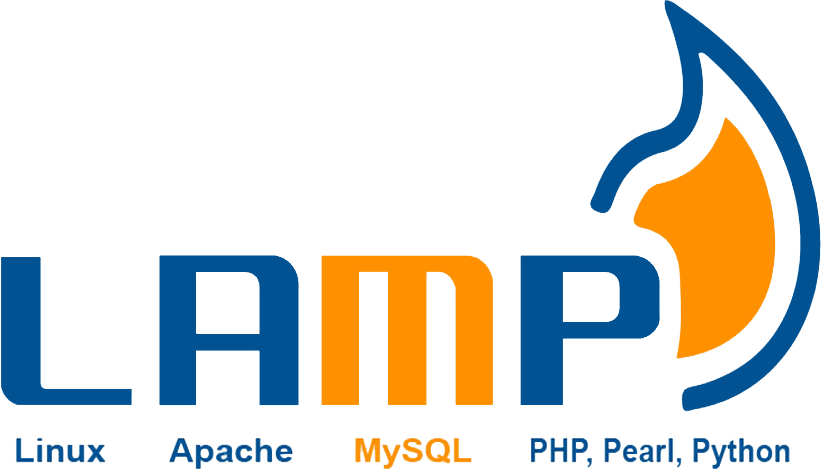
Linux serves as an open-source operating system, offering a stable and secure foundation for software creation. Apache is a prevalent web server, accommodating multiple programming languages, and is known for its adaptability and scalability. MySQL functions as a sturdy and reliable database management system, ensuring swift and efficient data access. Meanwhile, PHP operates as a server-side scripting language extensively utilized in web development.
Recognized for its straightforwardness, versatility, and cost-effectiveness, the LAMP stack empowers developers to craft dynamic, user-engaging web applications that are both manageable and scalable. It proves particularly beneficial for developers initiating their journey or handling modest to moderate-scale projects.
However, for expansive projects demanding enhanced scalability and performance, alternative options might be more suitable. Specialized projects with intricate requirements might also find other stacks more fitting.
LAMP stack’s user-friendly nature, adaptability, and affordability have cemented its popularity among developers globally.
Components of the LAMP Stack:
- Linux (Operating System/Platform)
- Apache (HTTP Server)
- MySQL (Relational Database)
- PHP (Programming Language)
2. ASP.NET Stack
ASP.NET emerges as a prominent technology stack in software development, widely acclaimed for constructing dynamic and resilient web applications. It represents a server-side web application framework meticulously crafted to synergize with the Microsoft .NET platform.
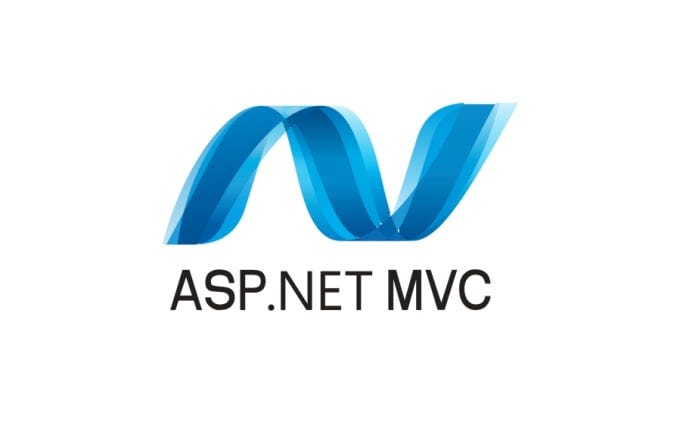
ASP.NET prioritizes scalability, performance, and security, standing out as its hallmark features. It furnishes developers with an extensive array of tools and libraries, facilitating the swift and efficient development of intricate web applications. The framework is adaptable, accommodating various programming languages, notably C# and Visual Basic. Moreover, it integrates seamlessly with a spectrum of Microsoft technologies, including Azure, SQL Server, and Visual Studio.
Compared to conventional web technologies such as PHP and LAMP, ASP.NET boasts several advantages. It outperforms them in terms of performance and scalability, adeptly managing high traffic volumes without sacrificing efficiency. Furthermore, ASP.NET incorporates robust security measures, positioning it as a top choice for applications demanding elevated security standards.
Nonetheless, mastering ASP.NET can be intricate, demanding specialized proficiency for effective utilization. Its learning curve tends to be steeper than that of other web development frameworks. Additionally, being a Microsoft-centric technology, it might not align with the preferences of developers favoring open-source platforms.
Notable Applications Built with ASP.NET: Microsoft
Key Components of the ASP.NET Stack:
- ASP.NET (MVC Framework)
- IIS (Microsoft Web Server)
- Typescript (Front-end Framework)
- SQL (Microsoft’s Enterprise Database)
- Microsoft Azure (Cloud Service)
3. MEAN Stack
The MEAN stack stands as a widely embraced technology stack in software development, distinguished as a free and open-source solution. Its constituent components encompass MongoDB, Express.js, AngularJS, and Node.js. Renowned for its adaptability and versatility, this stack is particularly well-suited for crafting dynamic and real-time applications.

MongoDB serves as a NoSQL database, adeptly storing data in document format, characterized by its scalability and ease of management. Node.js operates as a server-side JavaScript runtime, tailored to construct scalable and high-performance applications.
Express.js emerges as a robust and lightweight framework, facilitating web application development within Node.js. AngularJS, on the other hand, stands as a client-side JavaScript framework streamlining the creation of single-page applications.
A salient feature of the MEAN stack lies in its capacity to leverage JavaScript across both client and server domains, minimizing the necessity for developers to oscillate between disparate programming languages. This streamlined approach simplifies the processes of writing, testing, deploying, maintaining, and scaling applications.
The MEAN stack proves highly advantageous for developing real-time web applications, including chat platforms, gaming applications, and collaborative utilities. Moreover, it excels in constructing single-page and mobile applications, leveraging frameworks like Ionic and NativeScript.
4. MERN Stack
The MERN stack stands out as a prominent and potent software development stack tailored for crafting dynamic web applications. Comprising four pivotal technologies, namely MongoDB, Express.js, React, and Node.js, each component plays a pivotal role in fostering the development of resilient and scalable applications.
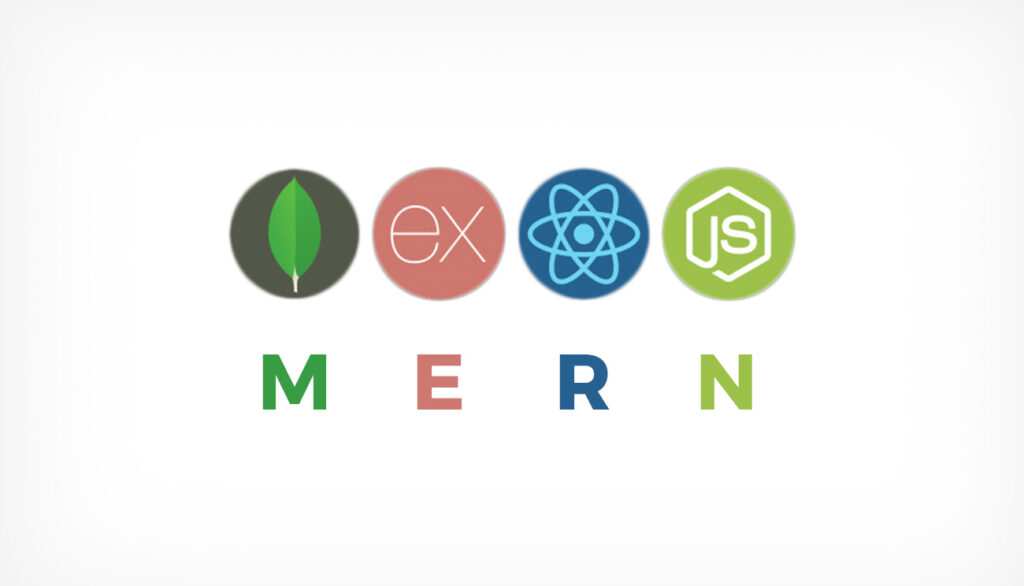
MongoDB serves as a document-centric NoSQL database, renowned for its scalability and adaptability in data storage and retrieval. With data stored in a JSON-like structure, MongoDB facilitates seamless integration and manipulation alongside other technologies.
Express.js, operating as a web application framework within Node.js, embodies characteristics of being lightweight and adaptable. It empowers developers by offering an intuitive API, streamlining the creation of server-side web applications, and proficiently managing HTTP server operations, requests, and responses.
React emerges as a widely acclaimed frontend library, facilitating the design of dynamic user interfaces. Equipped with an extensive suite of tools, React facilitates the creation of reusable components, state management, and event handling. Its utilization of a virtual DOM enables swift and efficient updates to the user interface.
Node.js serves as a server-side JavaScript runtime, specialized in constructing scalable and high-performance applications. Its event-driven, non-blocking I/O architecture equips it to adeptly manage substantial request volumes with speed and efficiency.
Combining these four technologies, the MERN stack proves exceptionally well-suited for architecting contemporary and dynamic web applications. These applications are characterized by their scalability, performance, and ease of maintenance.
Furthermore, the stack benefits from a vibrant and engaged community of developers and users, fostering its continuous growth and evolution, solidifying its position as a dependable and forward-looking choice for web development.
5. MEVN stack
The MEVN stack stands as a renowned technology stack, comprising four influential technologies: MongoDB, Express.js, Vue.js, and Node.js. Designed to construct robust and scalable web applications, it particularly excels in applications demanding real-time data streaming and dynamic user interfaces.
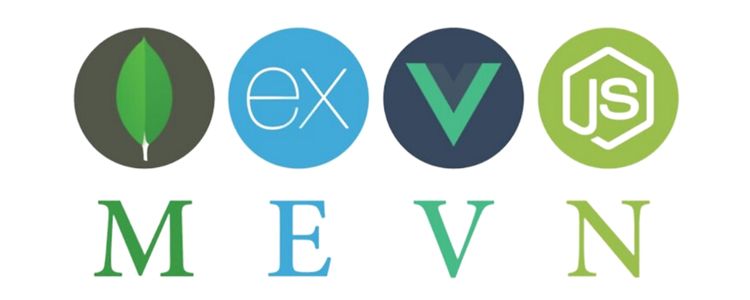
MongoDB operates as a NoSQL database, storing data in a document-centric format, distinguished by its scalability and versatile data modeling capabilities. Express.js, on the other hand, serves as a streamlined and adaptable web application framework, empowering developers to swiftly construct robust APIs. Vue.js emerges as a progressive JavaScript framework, facilitating the creation of intricate user interfaces. Lastly, Node.js serves as a JavaScript runtime environment, enabling developers to craft server-side code using JavaScript.
A salient feature of the MEVN stack lies in its unification under a single programming language, JavaScript. This cohesive approach eliminates the need for developers to toggle between different programming languages during application development, potentially accelerating the development process and curtailing associated costs.
Moreover, the modular nature of the MEVN stack facilitates seamless integration of new features and functionalities into the application framework.
The MEVN stack also boasts straightforward deployment and scalability options. Applications developed using the MEVN stack can be readily deployed on cloud platforms like AWS, Google Cloud, or Microsoft Azure. These cloud environments offer a scalable infrastructure capable of supporting expansive user bases without sacrificing performance.
However, the MEVN stack is not without its challenges. Being relatively nascent compared to stalwarts like LAMP and Ruby on Rails, it may suffer from limited online resources and documentation. Additionally, its suitability is somewhat constrained when tasked with developing large-scale enterprise applications necessitating intricate architectures.
Components of the MEVN Stack:
- MongoDB (NoSQL Database)
- Express JS (Backend Web-Framework)
- Vue JS (Front-end Framework)
- Node JS (Server-side JavaScript)
6. Ruby on Rails Stack
Ruby on Rails (RoR) emerges as a widely embraced open-source web application framework, harnessing the capabilities of the Ruby programming language. Over the years, RoR has garnered acclaim, primarily attributable to its “convention over configuration” philosophy.
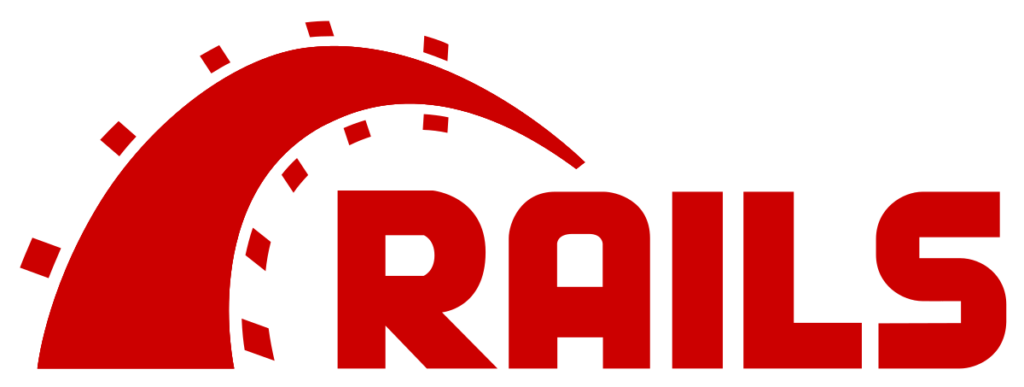
This principle empowers developers to concentrate on crafting application logic, rather than becoming entangled in intricate configuration intricacies.
The Ruby on Rails stack encompasses the subsequent components:
- Ruby: A dynamic, object-oriented programming language.
- Rails: A web application framework adhering to the Model-View-Controller (MVC) architectural pattern.
- QLite or PostgreSQL: Default relational database management systems supported by RoR.
- JavaScript, HTML, and CSS: Web development technologies facilitated by RoR for sculpting user interfaces and web pages.
RoR presents an array of advantages for software development endeavors. Foremost, it boasts a robust and vibrant community, furnishing an extensive repository of documentation, tutorials, and plugins. The modular architecture intrinsic to RoR facilitates streamlined maintenance and scalability. Developers can effortlessly incorporate or discard components, tailoring the framework to suit specific project requirements.
Additionally, the “convention over configuration” ethos of RoR substantially diminishes the time invested by developers in tedious configuration tasks. This streamlined approach not only accelerates the development process but also mitigates the probability of errors.
Furthermore, it fosters consistency across RoR applications, rendering them more comprehensible and coherent. Such attributes significantly bolster collaborative efforts and simplify code maintenance tasks.
7. Python Stack
Python stands as a versatile, high-level programming language in software development stacks. It is used across diverse domains, including web development, scientific computing, data analysis, AI, and machine learning. Celebrated for its intuitive syntax, user-friendliness, and adaptability, Python caters to both budding and seasoned developers.
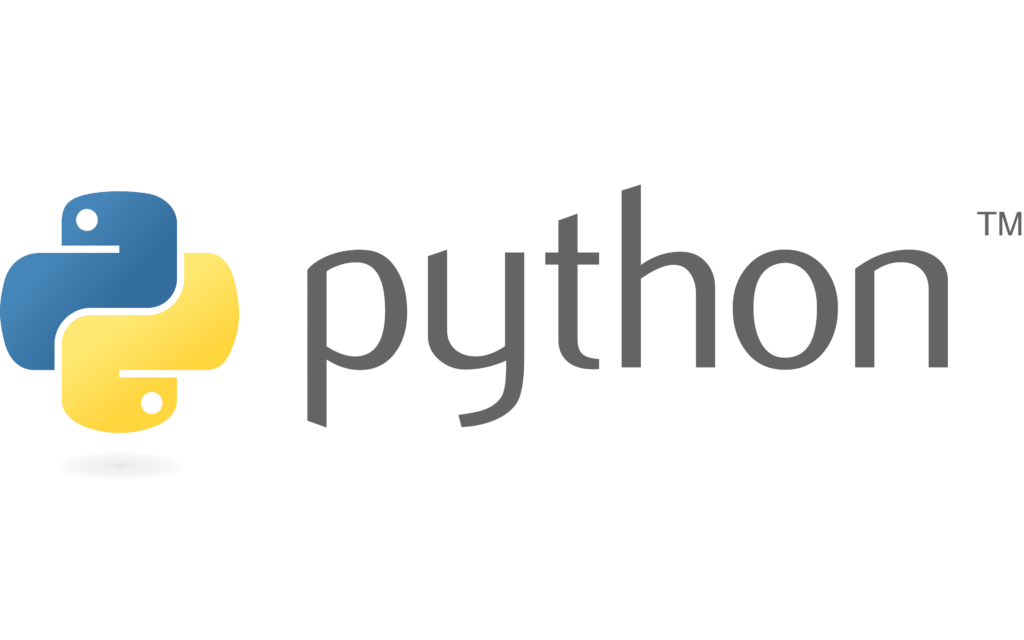
Being an interpreted language, Python enables swift code modifications and execution without necessitating prior compilation. This characteristic expedites the development cycle. Python’s expansive pre-existing code library further accelerates project completion. Among the plethora of Python web frameworks, Django and Flask stand out as particularly popular choices.
Python’s hallmark attributes encompass readability and simplicity. Designed with an emphasis on intuitive coding, Python’s syntax minimizes the lines of code required to achieve desired functionalities, making it especially appealing to novice programmers. Python’s interoperability with a broad spectrum of technologies, spanning frontend (e.g., React, Vue) and backend (e.g., Django, Flask), underscores its versatility, making it apt for crafting intricate, feature-laden applications.
8. Java Stack
Java, a stalwart in the realm of programming, predominantly serves enterprise-level applications, boasting decades of industry presence. Its expansive developer community, complemented by a rich repository of libraries, tools, and frameworks, streamlines the development process.

The Java stack encompasses three pivotal components: the Java programming language, the Spring framework, and a database system. Java’s platform-independent, object-oriented nature ensures code compatibility across diverse operating systems.
Spring, a renowned Java framework, facilitates modular, lightweight enterprise application development, encompassing facets like web development, security, data access, and testing. Java developers can harness a plethora of database systems, including MySQL, PostgreSQL, and Oracle.
Tailored for large-scale applications demanding optimal performance and scalability, Java also boasts robust security measures, rendering it a preferred choice for applications handling sensitive data. However, Java’s learning curve might appear steep for newcomers, and its resource-intensive nature can impact development timelines and costs.
9. Serverless Stack
Emerging as a contemporary trend in software development, serverless architecture liberates developers from infrastructure and server management concerns, enabling undivided focus on application code.

The serverless stack champions a groundbreaking approach, fostering the creation of scalable, cost-efficient applications devoid of dedicated servers, leveraging cloud computing services like AWS Lambda, Google Cloud Functions, and Azure Functions.
Grounded in the Functions as a Service (FaaS) paradigm, serverless architecture dissects applications into discrete, demand-executable functions. Triggered by specific events, these functions execute and deliver responses. This on-demand execution minimizes costs by eliminating charges for idle server resources.
Beyond cost efficiency, serverless architecture excels in scalability. Cloud providers autonomously adjust application scales in response to request volumes, negating concerns associated with traffic spikes or server resource management during peak periods.
Flexibility stands as a cornerstone of the serverless stack. With infrastructure management entrusted to cloud providers, adapting to evolving user demands or business requisites becomes seamless. However, serverless architecture might not universally suit all application types. Applications necessitating prolonged processes might warrant alternative solutions.
Additionally, serverless stacks reliant on cloud computing services might encounter latency challenges, potentially compromising responsiveness for applications demanding swift interactions.
10. Flutter for Web
Flutter is the most known among software development stacks. Google’s open-source mobile application development framework, has expanded its horizons to web development, introducing Flutter as a booming trend gaining traction for its distinct advantages.

It allows developers to craft visually captivating, high-performance, and responsive web applications spanning multiple platforms. Leveraging a shared codebase with its mobile counterpart, it will speed up development, fostering efficiency. Boasting a contemporary, user-friendly interface, it facilitates intuitive navigation.
A standout feature of Flutter for Web lies in its capability to produce web applications mirroring the aesthetics and functionalities of native mobile apps. The framework incorporates pre-designed widgets, streamlining web application design and development. The inclusion of hot-reload functionality enables developers to witness real-time code modifications.
Tailored for intricate, interactive web applications, Flutter for Web offers a suite of potent, customizable tools for crafting UI layouts and animations. Its compatibility with third-party APIs and services augments its flexibility, catering to applications necessitating data amalgamation from diverse sources.
11. React Native Stack
React Native, a JavaScript-based framework, specializes in sculpting native iOS and Android applications. Hinged on React, Facebook’s UI development library, React Native amalgamates JavaScript with XML markup, yielding authentic mobile UI components for a native semblance.

Apps developed using React Native epitomize reliability, performance, and a superior user experience. The framework facilitates remarkable code reuse across disparate environments, epitomizing efficiency. For instance, envision developing a travel application with React Native, optimizing code management, and delivering a seamless, consistent user experience across diverse devices.
12. PERN Tech Stack
This is one of the common software development stacks. It is an acronym including PostgreSQL, Express.js, React, and Node.js, essentially mirrors the MERN stack but integrates PostgreSQL as its relational database.
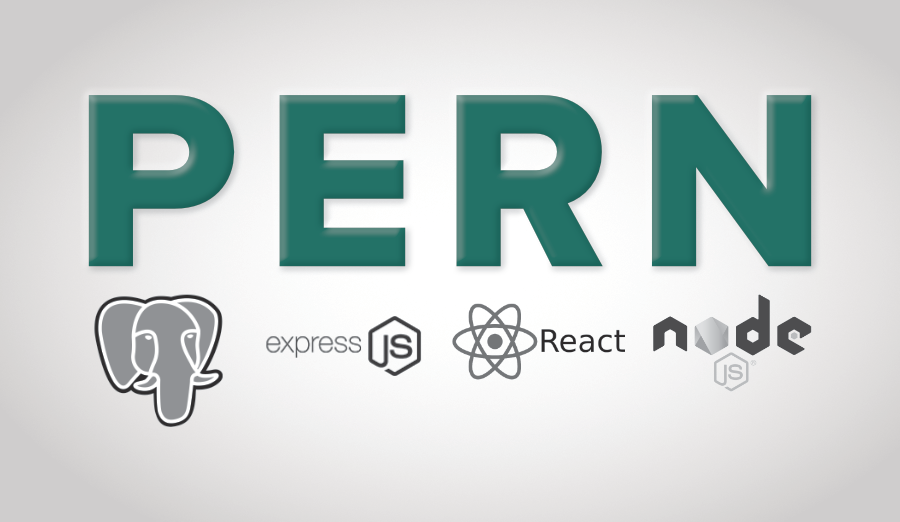
PERN harnesses React’s frontend prowess, complemented by PostgreSQL’s renowned reliability. This stack advocates seamless JavaScript integration throughout, although akin to MERN, it might encounter challenges with compute-intensive backends. Growing startups increasingly gravitate towards the PERN stack, attracted by its scalability and operational efficiency.
Microservices Architecture
Microservices architecture delineates an application into a constellation of loosely connected, finely-grained, functionally autonomous services.
Pros of Microservices Architecture:
Amplifies scalability and flexibility, especially in cloud environments, by facilitating independent deployment and scaling of individual application components.
Cons of Microservices Architecture:
Navigating a system comprising diverse, autonomous services can entail complexities, notably concerning inter-service communication and data management.
Associated Tools and Platforms:
- Spring Boot: A Java-centric framework streamlining microservices development via an array of tools and libraries.
- Netflix OSS: Netflix’s service and tool suite optimized for effective microservices management, spotlighting Eureka for service discovery and Zuul for gateway services.
- Docker Swarm: An orchestration utility governing Docker containers, frequently employed for packaging and deploying microservices.
Examples of Microservices Adoption:
- Netflix: An early advocate of microservices, leveraging them to manage the exponential growth and evolution of their streaming service.
- Amazon: Transitioned to microservices to accommodate the colossal scale of its e-commerce platform, bolstering flexibility and minimizing downtime.
Containerization
Containerization is the practice of encapsulating an application along with its dependencies into a container, enabling it to operate seamlessly across various computing environments. Docker stands out as a premier platform for containerization, while Kubernetes dominates the orchestration of these containers, particularly within microservices architectures.
Pros of Containerization:
Promotes consistent application performance across diverse computing environments by bundling applications with their dependencies.
Cons of Containerization:
Proficiently grasping and implementing containerization, especially orchestration tools like Kubernetes, can be intricate, demanding substantial learning and adaptability efforts.
Key Tools and Platforms:
Docker: Empowers developers to encapsulate applications within containers, fostering consistency throughout multiple development and deployment cycles.
Kubernetes: An open-source solution adept at automating the deployment, scaling, and management of application containers across host clusters.
OpenShift: Red Hat’s Kubernetes-derived platform furnishes a comprehensive ecosystem for Docker container development and deployment.
Examples of Containerization Adoption:
- Spotify: Leverages Docker and Kubernetes to oversee its services and expedite change deployment.
- Google: Embraces containerization extensively across its offerings, prominently within the Google Cloud infrastructure.
The Verdict: Which Tech Stack is Best?
Each technology stack mentioned in this article has the potential to enhance software development practices. However, the ideal choice hinges on specific project requirements and objectives.
Web Development:
For web application development, stacks like LAMP, MEAN, MEVN, and ROR are tailored to cater to web-centric needs. While other stacks can be adapted for web development, they might not be optimized for this specific domain.
Mobile App Development:
For mobile app endeavors, ASP.NET, MERN, and ROR stand out due to their extensive libraries, plugins, and the finesse required for mobile applications.
Cloud Infrastructure:
If an organization is inclined towards cloud-based software delivery, opting for a serverless stack would be apt, given its focus on cloud platform-centric software creation and deployment.
Flexibility:
It’s essential to note that these tech stacks aren’t set in stone. They can be customized by substituting technologies based on project requisites or client preferences, ensuring product alignment.
After meticulous consideration of the aforementioned factors, identifying the most suitable technology stack for your project becomes apparent. Here’s a roadmap to guide you:
- Plan the Development Process: Define the project scope, establish timelines, milestones, and allocate resources.
- Assemble the Team: Depending on project complexity, recruit developers or technical experts proficient in the chosen stack.
- Configure Development Environment: Install requisite software, tools, and libraries, ensuring seamless access for all team members.
- Develop the MVP: Create a Minimum Viable Product (MVP) to validate the concept and gather user feedback.
- Test and Deploy: Conduct rigorous testing to ensure functionality and performance, followed by deploying the application to the production environment.
[Want to learn more bout software development stacks? Click here to reach us.]
Conclusion
While the software development stacks represent just a fraction of available options, the most suitable stack hinges on specific project requirements. Factors such as application type, anticipated traffic, desired features, development team expertise, scalability, budget, timelines, and security considerations play pivotal roles in stack selection.
In conclusion, the chosen tech stack should align with project goals, leverage the expertise of the development team, ensure scalability, adhere to budgetary constraints, and address security requirements. The stacks highlighted above are robust, well-supported, and offer a plethora of advantages, making them viable choices for diverse development needs. Above opting for the right team for developmernt manwgrmet is the crucial part. Opt for a team like Bobcares to get the maximum out of tech stacks.
PREVENT YOUR SERVER FROM CRASHING!
Never again lose customers to poor server speed! Let us help you.
Our server experts will monitor & maintain your server 24/7 so that it remains lightning fast and secure.







0 Comments